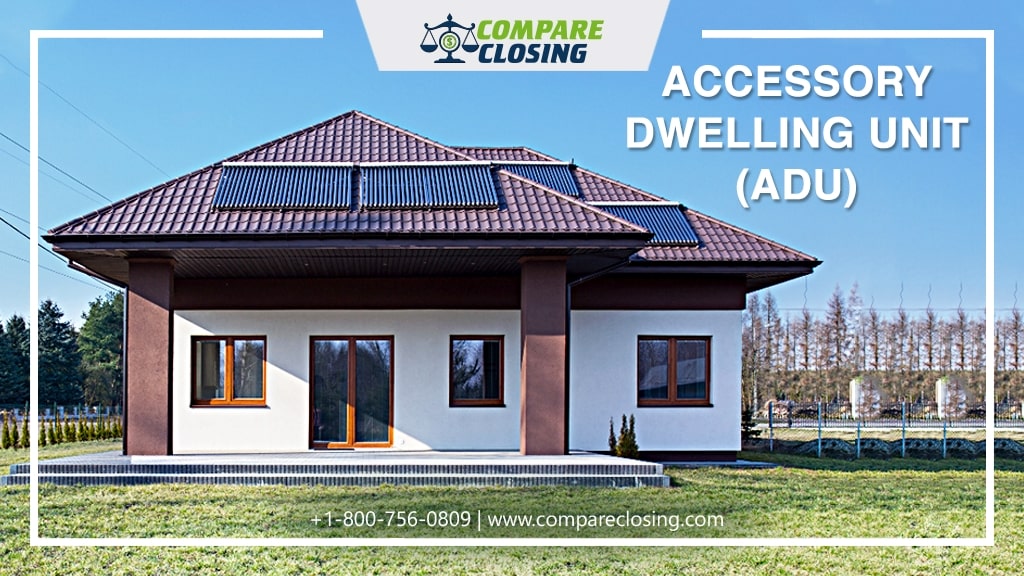Table of Contents
- What Are Netting Escrows & How Does It Work?: The Best Guide - January 2, 2024
- The Secret About Prescriptive Easement: Top Guide 1 Must Know - December 4, 2023
- About Home Equity Loans In Texas And How Can One Obtain It - November 27, 2023
What Is An Accessory Dwelling Unit (ADU)?
A secondary house or apartment that shares the building lot of a larger primary home is called an Accessory Dwelling Unit (ADU) in legal and regulatory terms.
Even though the unit cannot be bought or sold separately, they are often used to provide additional income through rent or to house a family member.
For instance, an elderly parent could live in a small unit and avoid having to move to a senior care facility.
Knowing More About Accessory Dwelling Units (ADUs)
AD or Accessory Dwelling Units is also called a secondary dwelling unit, in-law unit, carriage house, or granny flat.
These units have their separate entrance, their own kitchen, and living area. An ADU might be connected to the house or garage, or it can be built as a stand-alone unit, but the water and energy connections of the primary house are used in general.
After World War II, most residential areas in America were zoned to set limits on population density and the size and separation of single-family dwellings because of the housing boom.
Recently, in many areas around the country, there have been zoning changes allowing the addition of ADUs.
There are limitations set by the zoning laws on the size and style of any new unit and it is mandatory for the owner to live on the property.
Pro And Cons of Accessory Dwelling Units (ADUs)
Pros Of Accessory Dwelling Units (ADUs):
- ADUs can provide extra income if rented.
- ADUs add more value to the property.
- More space gets added to ADUs like a workshop or a guest suite.
Cons Of Accessory Dwelling Units (ADUs):
- An ADU can take up space that could have been used for storage, or a garage.
- Good maintenance is required in case an ADU is used as a rental.
- Building an ADU will cost money, there is the possibility of an increase in property taxes, and utilities resulting in bigger monthly expenses.
Some people use ADUs as a means to house family members, but many others use them for rental income.
If it is a wise investment or not depends on various factors, like local zoning ordinances, maintenance costs, upfront costs, possible tax consequences, and activity in the rental and housing market and also depends from one landlord to another.
A homeowner intending to build an ADU should first confirm if it is lawful on their property.
If a homeowner has to refinance the property then by building an unlawful ADU they will face issues.
A possible code enforcement action resulting in fines could be a result of building an unauthorized ADU. So before engaging in any building owners should look to their zoning ordinances and ideally consult with a legal specialist.
There are various other factors to consider while building an ADU, the cost would vary depending on whether the ADU will be attached or detached from the main home?
What renovations are needed, and does the homeowner need to seek professional services from construction contractors, engineers, or surveyors?
The ideal way of financing an ADU depends on the owner’s individual situation. They can take out a renovation loan, refinance if the homeowner has equity in their home, or pull from available cash on hand.
A homeowner’s tax bill could increase with the construction of an ADU, so it would eliminate a significant amount of the profit.
The housing and rental market varies from one state to another and from one city to another.
Conclusion
An ADU is an extra residential building that resides in the same lot as a primary residence.
A guest house or a detached garage with a rented apartment above is all examples of an ADU.
Depending on the area one lives the establishment and use of an ADU will fall under different zoning rules and regulations.
Additional income in the form of rent can be got with an ADU. An ADU will increase monthly utility bills and will cost money to build and maintain.
Amanda Byford
Amanda Byford has bought and sold many houses in the past fifteen years and is actively managing an income property portfolio consisting of multi-family properties. During the buying and selling of these properties, she has gone through several different mortgage loan transactions. This experience and knowledge have helped her develop an avenue to guide consumers to their best available option by comparing lenders through the Compare Closing business.






When you add an ADU to your property, there are many different ways to use the space. They may be attached or detached and can be for your family’s personal use or for business income. An attached option may look like completing a garage conversion to turn unused car space into a fully functioning studio apartment with a kitchen and bathroom for rent or use by a family member.
I appreciate your explanation when you told us that an ADU refers to a second dwelling unit with a separate entrance, kitchen, and living area that can be connected to the house or the garage. My sister will be staying in our house with her kids now that she is divorced, so we are considering connecting an ADU to the house soon for them to stay in. I’ll keep this in mind while I look for a contractor in Milpitas to contact about ADU installation soon.
An Accessory Dwelling Unit (ADU), as described here, offers valuable versatility. It’s a secondary housing unit sharing the same property as the main home, often used to generate extra income or accommodate family members. ADUs come with pros, like added property value and potential extra income, but also cons, such as space considerations and increased costs. The decision to invest in one depends on various factors, including local regulations, maintenance, and financial considerations. ADUs can be an attractive option, but homeowners should do their due diligence before proceeding.